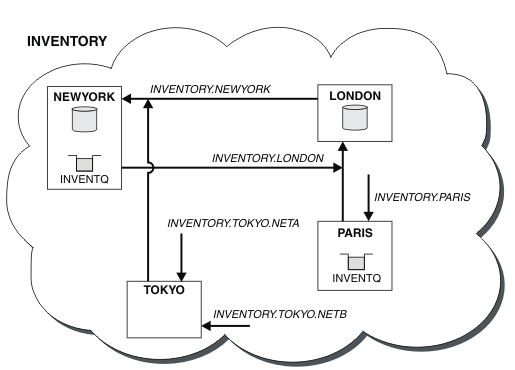Using two networks in a cluster
Follow these instructions to add a new store in TOKYO where
there are two different networks. Both need to be available for use
to communicate with the queue manager in Tokyo.
Before you begin
Note: For changes to a cluster to be propagated throughout
the cluster, at least one full repository must always be available.
Ensure that your repositories are available before starting this task.
Scenario:
- The
INVENTORYcluster has been set up as described in "Adding a queue manager to a cluster". It contains three queue managers;LONDONandNEWYORKboth hold full repositories,PARISholds a partial repository. The inventory application runs on the system in New York, connected to theNEWYORKqueue manager. The application is driven by the arrival of messages on theINVENTQqueue. - A new store is being added in
TOKYOwhere there are two different networks. Both need to be available for use to communicate with the queue manager in Tokyo.
About this task
Follow these steps to use two networks in a cluster.
Procedure
Results
Figure 1 shows the cluster set up by this task.
INVENTORY cluster,
with four queue managers
By making only three definitions, we have added the queue
manager TOKYO to the cluster with two different network
routes available to it.